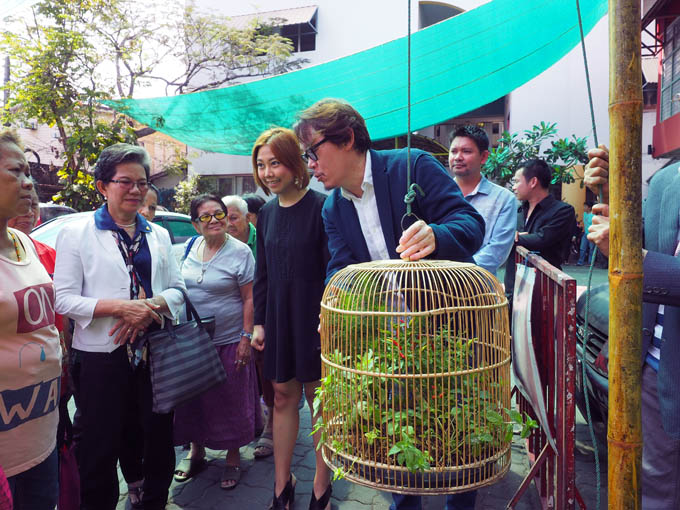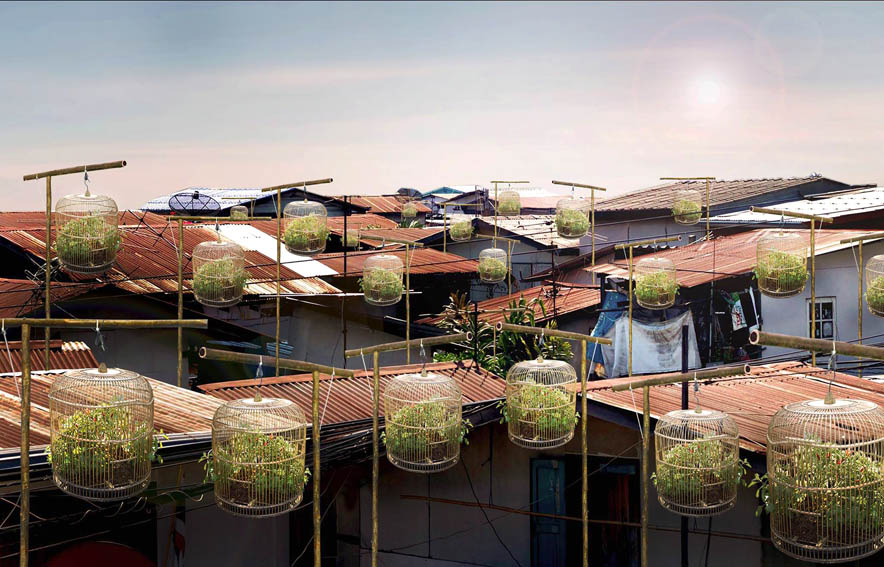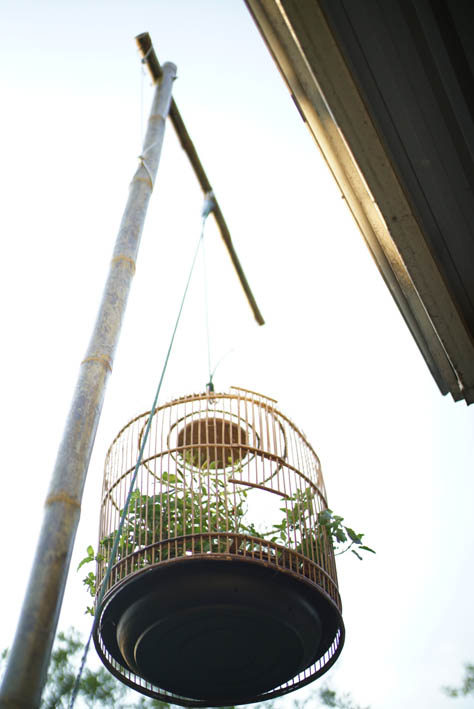BBDO Bangkok CCO Suthisak Sucharittanonta helps bring vegetables to the city’s slums
 BBDO Bangkok’s chairman and chief creative officer Suthisak Sucharittanonta has taken on a personal project to help those less fortunate living in the slum areas of Bangkok.
BBDO Bangkok’s chairman and chief creative officer Suthisak Sucharittanonta has taken on a personal project to help those less fortunate living in the slum areas of Bangkok.
Whilst in conversation with Khun Penwadee of Duang Prateep Foundation she posed a question to Sucharittanonta – “How can people in slums grow their own vegetables?”
Sucharittanonta (pictured above) was initially surprised believing that they could grow their own vegetables but Khub Penwadee explained that in the slums land is scarce, it’s crowded and the rooftops overlap.
“Khun Penwadee took me to the rooftop of the local kindergarten school building, and as I looked around I saw fresh basil, sweet basil, chilies and morning glory vegetables basking in the hot Thai sun, much like my face was doing at the time,” explained Sucharittanonta. “I continued my walk around the surrounding slum community trying to identify any potential space to grow vegetables, but sadly there’s none! Houses are built back to back with tiny spaces between the roofs. And with what little space they do have, it is typically used to string up clotheslines to dry clothes.
“So, if they want to eat vegetables, they have to buy them… but no! They’re poor and they need money to survive, not to buy vegetables.”
 When Sucharittanonta got home he realized that he had never grown vegetables in his life, so how could he help others do it. He decided to learn how to grow organic vegetables from a friend, Sergeant Pornchai, who grows vegetables in the army camp near his house. Sucharittanonta rides his bicycle past his vegetable farm almost everyday, and see his plants lined up like green army troops standing attention to their leader.
When Sucharittanonta got home he realized that he had never grown vegetables in his life, so how could he help others do it. He decided to learn how to grow organic vegetables from a friend, Sergeant Pornchai, who grows vegetables in the army camp near his house. Sucharittanonta rides his bicycle past his vegetable farm almost everyday, and see his plants lined up like green army troops standing attention to their leader.
Sergeant Pornchai introduced to the African night crawler.
“They eat a lot and poop a lot and Sergeant Pornchai uses their waste as organic fertilizer. He then reached into a nearby bucket and grabbed a pile of worm poop and put it in my hand. I was shocked!” said Sucharittanonta. “This was the first time in my life that I had a pile of fresh poop in my hand. Luckily it was from worms. After a quick hand rinse, he taught me how to collect the worm “fertilizer” and also make the EM water that he uses to feed his vegetables. After a week, I learnt how to grow vegetables but I still hadn’t figured out how to grow vegetables in the slums! Then one day, as I rode my bike past a country house in Cha-am, I saw a man raising his Zebra Dove bird cage to the top of a pole. The Zebra Doves coo beautifully when they’re up there, with sunshine and a nice breeze. Also, they can see other birds.
 This gave Sucharittanonta the inspiration for this idea. What if the people who live in the slum can grow vegetables in a bird cage. After planting and watering the vegetables in the base of the cage, they can raise it up to the top of the pole, and when they are ready, they can pull it down to pick for cooking. No land is needed, just a bird cage!
This gave Sucharittanonta the inspiration for this idea. What if the people who live in the slum can grow vegetables in a bird cage. After planting and watering the vegetables in the base of the cage, they can raise it up to the top of the pole, and when they are ready, they can pull it down to pick for cooking. No land is needed, just a bird cage!
It took a month to build these ‘hanging gardens’: “We grew different vegetables in cages to test how the mechanics worked. We wanted to make sure that the process was simple for the people: simply water the vegetables, then put it up to the top of the pole, and bring it down in the evening to pick vegetables to cook or eat. At the end of the test phase, our project was a success. The bird cage gardens work and look beautiful, but we still need to find a way to reduce the cost to make it more affordable.”
After we shared the idea to Khun Sasinant of the Duang Prateep Foundation, she share it with people in the slums, so that they could build their own.
“So in the end, thanks to a random bike ride I finally figured out how to grow vegetables in the slum with just 3 key things: bird cage, bamboo and some worm poop,” said Sucharittanonta.

1 Comment
Great work Suthisak. Lovely story on how the idea developed.